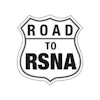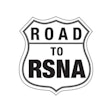Monday, November 27 | 9:30 a.m.-9:40 a.m. | M3-SSIN02-1 | Room S404
Adding a layer of cloud-based software may improve the integration of AI results into the PACS, radiology report, and EHR, according to a proof-of-concept study to be presented Monday.
This research stems from pitfalls that have been cited with the adoption of AI algorithms in real-world clinical environments. The work to be presented by Neil Chaterjee, MD, PhD, demonstrates how a cloud-based software layer for automatic AI analysis performs for PACS and reporting engine integration.
For the proof-of-concept study, Chaterjee et al developed an AI algorithm for reporting hepatic steatosis and deployed it in a live clinical environment.
How it works: After an imaging study, an HL7 message is sent to the vendor-neutral archive (VNA) which instructs the PACS to move the study to the AI server hosted on a cloud-computing program. The AI server processes the images and outputs image overlays to PACS and summary statistics as common data elements (CDEs) in a DICOM structured report (DICOM SR). The DICOM SR is sent to the reporting engine via an HL7 router, permitting the CDEs to be inserted into a report via a macro. For the project, 701 studies with appropriate CT codes were processed in the first 14 days after deployment.
According to Chaterjee, the cloud-based software can run any arbitrary AI algorithm and seamlessly integrate results into PACS and clinical reports. However, in this application of a liver segmentation AI algorithm, the approach allowed for opportunistic screening of hepatic steatosis in every patient that underwent an abdominal CT, as Chaterjee will explain during the talk.
This could significantly decrease the barrier to clinical AI adoption and generate large quantities of AI-processed data for research, according to Chaterjee. Learn more at the Monday morning session.


